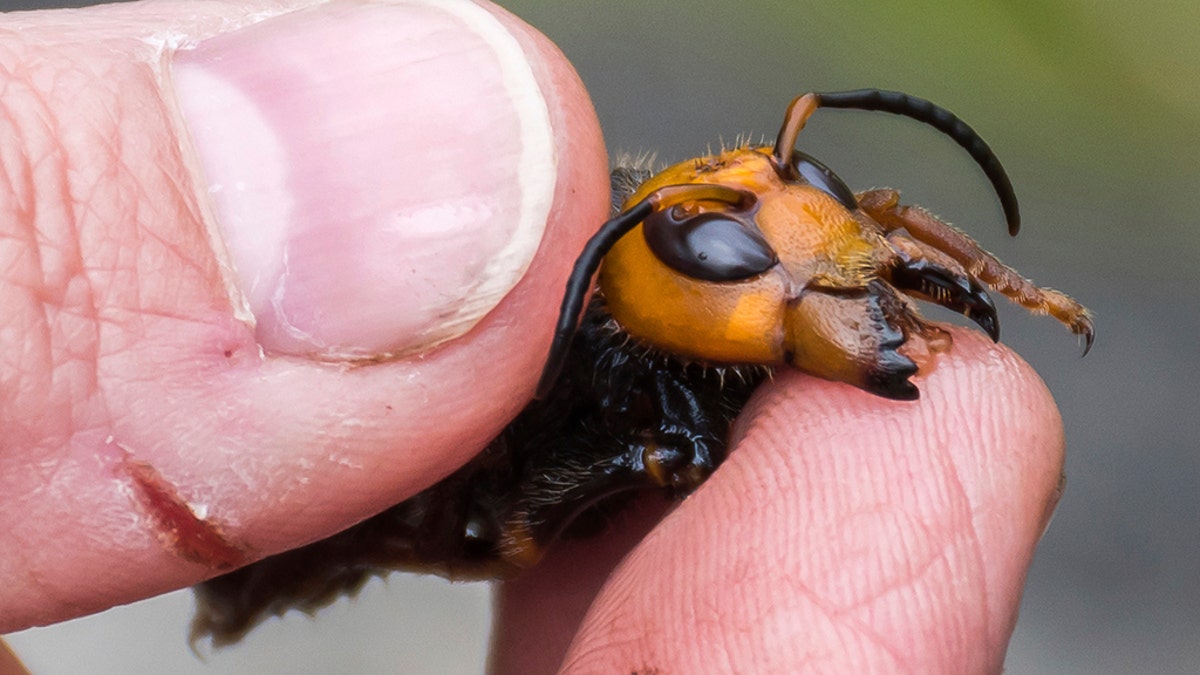'Murder hornets' pose risk to honey bee population
'Murder hornets' spotted for first time in U.S.; Noah Wilson-Rich, for the Best Bees Company, speaks out.
A man in northwest Spain, 54, died after being stung by a “murder hornet,” according to a report.
The man from Villestro in Galicia was stung in the eyebrow by an Asian giant hornet while tending to a wasp nest close to a beehive he owned.
ASIA'S 'MURDER HORNET' LANDS IN US FOR FIRST TIME
The deadly insects from Asia were first spotted last weekend in Washington state. Measuring up to 2 inches long, the world’s largest hornets have been known to wipe out bee colonies within hours: The big bugs decapitate entire hives of honeybees, and that crucial food pollinator is already in big trouble. The hornet can kill up to 50 people a year in Japan, The New York Times reported.
Such reports have whipped up a national panic that may lead to more “needless” damage to those essential insect populations, the experts warned.

FILE - In this April 23, 2020, photo provided by the Washington State Department of Agriculture, a researcher holds a dead Asian giant hornet in Blaine, Wash. (Karla Salp/Washington State Department of Agriculture via AP)
“Millions and millions of innocent native insects are going to die as a result of this,” Dr. Doug Yanega, a professor of entomology at the University of California, Riverside, told the Los Angeles Times. “Folks in China, Korea and Japan have lived side by side with these hornets for hundreds of years, and it has not caused the collapse of human society there. My colleagues in Japan, China and Korea are just rolling their eyes in disbelief at what kind of snowflakes we are.”
Following the initial hornet sightings on May 2, the Washington State Department of Agriculture issued instructions on how to trap the hornets, stressing that so far, the hornets have been sighted only within the state.
'MURDER HORNETS' POSE RISK TO HONEY BEE POPULATIONS
“There are no known sightings of Asian giant hornets anywhere else in the United States and trapping for them there will likely do more harm than good by catching native desirable insects. PLEASE DO NOT TRAP FOR ASIAN GIANT HORNETS IF YOU LIVE OUTSIDE OF WASHINGTON STATE,” the warning read.

A man in northwest Spain, 54, died after being stung by a “murder hornet,” according to a report. (FILE)
The concern for bees has stemmed from their role in the general ecosystem: Bees are responsible for pollinating approximately 75 percent of the fruits, nuts and vegetables grown in the United States, according to the U.S. Geological Survey.
Numerous bug experts told The Associated Press that what they call murder hornet “hype” reminds them of the 1970s public scare when Africanized honeybees, nicknamed “killer bees,” started moving north from South America. While these more aggressive bees did make it up to Texas and the Southwest, they didn’t live up to the horror-movie moniker. However, they also do kill people in rare situations.
